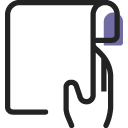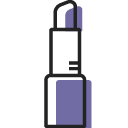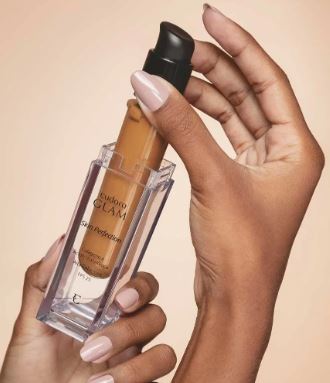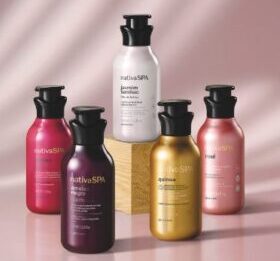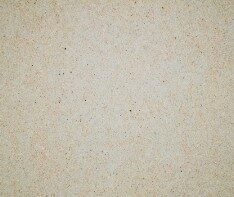The future of packaging

Packaging is a central aspect of product development and the way we think about waste in our beauty ecosystem. We are constantly improving, seeking scientific advances in materials and methods. Furthermore, packaging is a fundamental part of the search for more sustainable products.
Our decisions always considers three dimensions in development:

Human toxicity
It evaluates the risks associated with substances that raise possible concerns for human health, such as carcinogens, mutagens or toxicants.

Environmental impact
It qualifies the environmental risks caused by substances from the extraction, processing, production, recyclability and/or biodegradability process.

Social impact
It analyzes the social impacts caused by the material production process related to the exploitation of child labor, slave-like work, etc.
Using these criteria, we make decisions to control use, replacement or even the ban of the substance that will be part of our packaging.
ecodesign and sustainable materials
Ecodesign is a concept that considers environmental aspects when developing a new product, considering not only the use of non-renewable resources but also the minimization of environmental impact throughout its life cycle.
In other words, the objective of ecodesign is to reduce waste generation and save costs and impact on final disposal.
Therefore, at Boticário Group, we work to reduce packaging waste as much as possible, always looking for solutions that reduce the environmental impact of products.
Ecodesign:
Listen to the podcast with the Design and Sustainability manager from Boticário Group.

we co-create to innovate
Here, in R&D, we have the Design and Prototyping area that works by listening to the needs of our consumers, translating marketing desires and market needs into packaging and products.
We integrate three work fronts into a very fluid creation process, in which we start with research and search for inspiration, generating insights and content based on trends and DSGN Experience.
After so much inspiration, we work based on DSGN Concept for the conceptualization and creation of products in original packaging, through Graphic Design, Product Design and Prototyping, working hard and bringing other people from the Group to co-create with us.
All this process is always consumer-centered and uses agile methodologies.
To complete this entire process, we conduct all the technical finalization of the packaging in DSGN Graphic, adding all the necessary information to the product and preparing the digital files to follow the process through our partners.
Learn more about our Ecodesign initiatives:
reduction of packaging waste
A SINGLE MATERIAL: These are products that had all packaging components produced with the same material, except for the secondary packaging. As there is no mixing of raw materials, during the recycling process the step of separating the parts is eliminated (which happens when there is a glass component and a plastic component in the same product, or plastic and paper, etc.).
This way, all components can be crushed at once, speeding up the process and reducing operation costs.
Example of single-material packaging:
Botik refills
Refill in monomaterial tube that benefits the plastic recycling chain, as it facilitates recycling. The raw material for the packaging is made from a 100% renewable source (uses vegetable plastic from sugar cane) and presents 91% less packaging compared to standard Botik packaging.
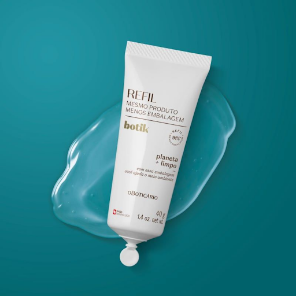
some examples
refillable
We significantly reduced the use of plastic in packaging, using them and refilling them with refills. See some examples:
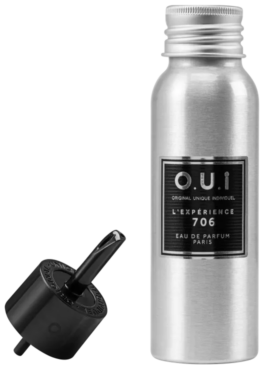
ARBO ALUMINUM REFILLS
The aluminum refill of the Arbo Forest launch, in addition to the innovation in perfumery with refills, allows the weight of the packaging to be reduced by 89% compared to the original packaging.
ALUMINUM REFILLS IN THE O.U.I. LINE EAU DE PARFUM
Refilling is a sustainable and innovative way to fully replace the contents of your Eau de Parfum. In addition to reusing an existing bottle, the refill allows the packaging weight to be reduced by 91%, reducing greenhouse gases involved in transportation.

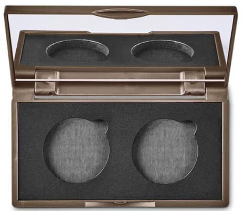
REFILLABLE MAKEUP CASE SUCH AS THE PALETTES
FROM QUEM DISSE, BERENICE?
The eyeshadow refill cases are available in formats for 2, 4 or 8 eyeshadow colors. When compared to market options, the two-color case, for example, weighs 18% less and the refill packaging is 4% lighter (in other words, less material is consumed).
REFILL FOR CUSHION FOUNDATION AND MAKE B COMPACT POWDER.
Using a cushion foundation, we reduce the amount of plastic released into the environment by more than 90% per year. The new compact powder brought a reduction of more than 70%. We have reduced more than 25 tons of plastic per year! This equates to avoiding the use of more than 60 thousand liters of oil per year.
products with recycled plastic
2021 FATHER’S DAY KIT BAG
They were produced with paper waste from Boticário Group factories.
By reusing this paper waste to produce new kits, we completed the cycle of our waste. As a consequence, we avoided the purchase of 16 tons of paper.
RIBBONS USED IN CELEBRATION DATES PACKAGING
The ribbons we used were made with 50% recycled PET. Thus, we managed to avoid the disposal of around 420,000 PET bottles.
RECYCLED SURLYN
Boticário Group has developed an unprecedented process in Latin America for recycling perfume caps produced with Surlyn, an ionomer resin manufactured by Dow. Due to its great complexity, this raw material, despite being recyclable in other categories, had not been viable in the cosmetics sector. With the technology developed in partnership with Wise, Aptar and Dow, the caps can be collected after consumption, separated by recycling cooperatives and transformed into resin again (Surlyn PCR), and finally, reincorporated into new caps of new products available for the consumer.
FLORATTA LAUNCHING USING SURLYN PCR
From the recycling of collected caps from our factories and reverse logistics programs in Boticário Group, we reincorporated around 3 tons of recycled material, avoiding the use of 3 tons of virgin Surlyn. As a result, we saved BRL 250 thousand for developing the process that allows the material to be recycled, in addition to reducing the footprint by 10% compared to the virgin Surlyn process.
RECYCLED GLASS
We preferably choose to use recycled glass obtained from our packaging waste.
Malbec Club Intenso bottles are produced with 35% post-consumer recycled glass (PCR) and 10% waste from glass production. This means that, every year, more than 180 tons of glass are reused, which is equivalent to more than 700 thousand bottles of Malbec. In 2019, this innovation gave us ABRE’s gold award in the sustainability category.
BOTIK LINE
Botik’s serums and creams use amber glass bottles
made from recycled material, saving 23 tons of glass per year.
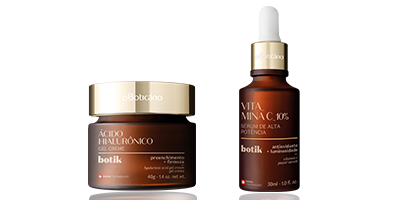
reduction of impact on the chain
At Ecodesign, we are also concerned about the environmental impact during the packaging manufacturing process. Our solutions are:
Renewable source material
Plant-based plastic or green plastic is polyethylene produced from sugar cane ethanol. In addition to being of renewable origin, it is 100% recyclable and does not contribute to global warming, as it captures and fixes carbon dioxide from the atmosphere, helping reduce greenhouse gas emissions. And it has the same characteristics of traditional polyethylene. Cuide-se Bem line packaging is made from sugar cane material and prevents the emission of approximately three thousand tons of CO2 per year.
Recyclable label
The bottle labeling process produces waste (liner) that is not recyclable, but we seek to replace it with a liner made from 100% recyclable PET material in our production.
Sustainable life cycle
Throughout the product’s entire life cycle, we seek to develop packaging with the aim of reducing environmental impact considering all stages of manufacturing.
Reuse
Our packaging design is developed to reuse deactivated molds, without the need to build a new one. Consequently, we save approximately 1 ton of steel consumption for each packaging mold.
Sustainable decoration or finishing
Our packaging decoration or finishing reduces the environmental impact in the manufacturing process.
sustainable transport
SUSTAINABLE AND SAFE SOLUTIONS
Disposal of packaging items such as plastic bags, seals and stamps that do not impact the performance and functionality of the product or its safety. As a consequence, we guarantee a reduction in environmental impact.
SMART PACKAGING DESIGN FOR SHIPPING
Better use of transport boxes with elaborate packaging design, aiming to guarantee a perfect fit. This way, we are able to transport more products from the factory to the Distribution Center, reducing CO2 emissions on the planet.
NATIONALIZATION
Aiming to reduce CO2 emissions on the planet, we value national partners to supply our packaging.
post-consumer
Furthermore, our reverse logistics program for post-consumer packaging is the largest in collection points in Brazil.
After all, collection points are present in 100% of our stores, with more than 4 thousand points of sale that receive packaging from any cosmetic brand and forward it to recycling cooperatives that benefit thousands of collectors of recycled materials.

I.A.R.A.® 2.0 – Packaging
In partnership with EMBRAPII and SENAI, we developed a methodology that allows the assessment, on a laboratory scale and in a simulated environment, of compositions (bio)degradation and ecotoxicity of plastic packaging.
Do you know what ecotoxicity analysis is for? It is an important tool to assist in the selection of raw materials in the cosmetic product formulation process. Thus, more sustainable products that generate less impact on the aquatic environment are developed, posing less risk to the environment, in addition to helping to generate sustainability indicators.
PET PCR collected from beaches x circular economy
Plastics collected on the coast of São Paulo will guarantee 100% sustainable packaging for new Boticário Group’s products. Boticário Group, in partnership with Globalpet and cooperatives on the coast of São Paulo, intends to remove 265 tons/month of plastic waste from the beaches, which will be used to produce thousands of packaging for cosmetics. Making the industry more sustainable is one of the Group’s missions, so that we have been looking for alternatives for the production of ecologically responsible plastic packaging.
The Seaside project, a front in the Research & Development area, was created for this purpose.
The project aims to use plastic waste that is discarded on beaches, preventing it from reaching the oceans and transforming it into new packaging for the Group’s products. The first phase of the project, in partnership with Globalpet, which purchases plastics from cooperatives and collectors on the coast of São Paulo, is expected to collect approximately 265 tons/month of PET plastic. This plastic will be processed, transformed into resin and will give rise to packaging of sunscreens and other items from our portfolio, all ensuring the same quality and usual safety for the consumer.
Focusing on sustainability, circular economy, and decrease of environmental and social impact, Seaside, via Globalpet, will also benefit 316 families of cooperative workers from seven coastal cities in São Paulo: Guarujá, Itanhaém, Mongaguá, Peruíbe, Praia Grande, Santos and São Vicente.
The great volume of plastic waste that will be collected from São Paulo beaches is already significant for the protection of the environment.
However, looking at the future of this material, each kilogram of resin obtained from waste collected in PET PCR material can yield 35 new 237 ml bottles. The 125 ml packaging per product can have 55 new bottles per kilogram of resin.

